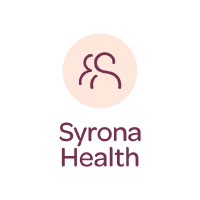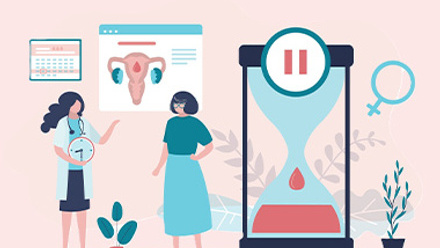Why gynaecological health should be a priority of your wellbeing strategy

With wellbeing increasingly receiving a corporate focus, more and more organisations are implementing formal wellbeing strategies to tackle issues of mental health, benefit provisions, support for disabilities and more. According to the Chartered Institute of Personnel and Development’s 2021 health and wellbeing survey, 75% of senior leaders now have employee wellbeing on their agenda, compared with 61% in 2020.
But, despite strides towards improving and prioritising employee wellbeing, most companies’ strategies – if they have one at all – stop short of addressing the chronic health conditions that could be affecting their workforce. Women, trans and non-binary people make up around half of the general workforce, yet their needs remain underserved by both the healthcare industry and by the companies they work for.
This neglect is detrimental to organisations, too. Gynaecological health issues are a major cause of work absence and poor mental health, which affects productivity and happiness at work.
Gynae health is not a niche issue – it affects everyone with a uterus and it will affect your employees at one point or another. Any company looking to make employee wellbeing a priority needs to be thinking about gynae health and how to support employees through the health transitions that mark their lives.
Endometriosis and PCOS
Endometriosis and PCOS are chronic gynaecological health conditions that usually start between puberty and the early 20s. Both impact approximately one in 10 women or people with a uterus. That’s 1.5 million women living with endometriosis in the UK - about the same as the number of women who have diabetes, according to Endometriosis UK. Numbers for PCOS are hard to ascertain as the condition often goes undiagnosed due to lack of education and funding.
For your workforce, this means that you are more than likely to encounter endometriosis and PCOS at work - be it through employees taking time off for doctor visits (both for treatment and seeking diagnosis), chronic pain that leaves many bedridden and emotional distress that inevitably spills over into other aspects of life.
These conditions are often severe, but they don’t have to be. Even something as simple as offering your employees the ability to take a clinical test from home or access to an online gynae health specialist can save them years of turmoil.
For endometriosis alone, it takes an average of eight years to receive a diagnosis after the onset of symptoms. Offering your workforce this access will save them time at the doctor’s office or at home suffering, and allow them to live their lives.
Fertility, pregnancy and parenthood
As your employees leave young adulthood and enter mid-career, questions of fertility, pregnancy, and parenthood will inevitably affect them. Fertility struggles affect about one in seven couples, according to the NHS, and the road to pregnancy can carry a huge physical and emotional toll.
Therefore, it is paramount to ensure your workforce has access to fertility tests and emotional support, as well as support during parenthood for the challenges that will inevitably impact on your employees’ financial, emotional, and physical wellbeing.
Menopause
Menopause marks a transition for anyone with a uterus and with people living and working longer it will impact nearly every work sector. But menopause is markedly underserved in the space of employee wellbeing.
This neglect carries real-life ramifications for women who are senior leaders or experienced in their careers, with up to an alarming 1 million UK women expected to give up work this year alone due to menopause symptoms affecting their ability to work.
A robust employee wellbeing plan needs to take menopause seriously and there are many ways to incorporate this into your strategy – offering access to nutrition specialists, hormone therapy, counselling, or even just the ability to work from home in a comfortable environment.
Prioritising wellbeing means prioritising gynae health
Gynaecological health touches each and every organisation, following employees through the health transitions they go through in life. An employee wellbeing strategy that addresses gynae health head-on will improve retention, foster a workplace of care and make work an all-round happier place for all members of your team.
The author is Emma Olsson
This article was supplied by Syrona Health
Supplied by REBA Associate Member, Syrona Health
Track your symptoms & lifestyle to get expert insights with SORA, your virtual health assistant







